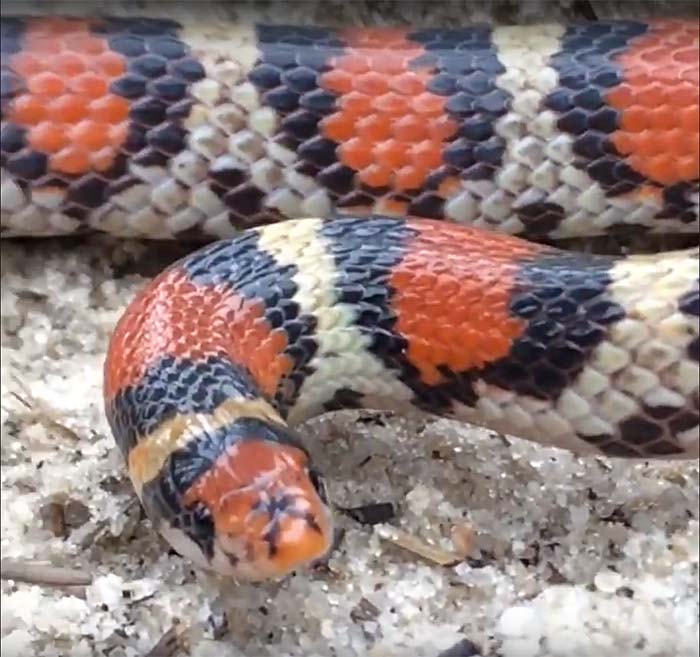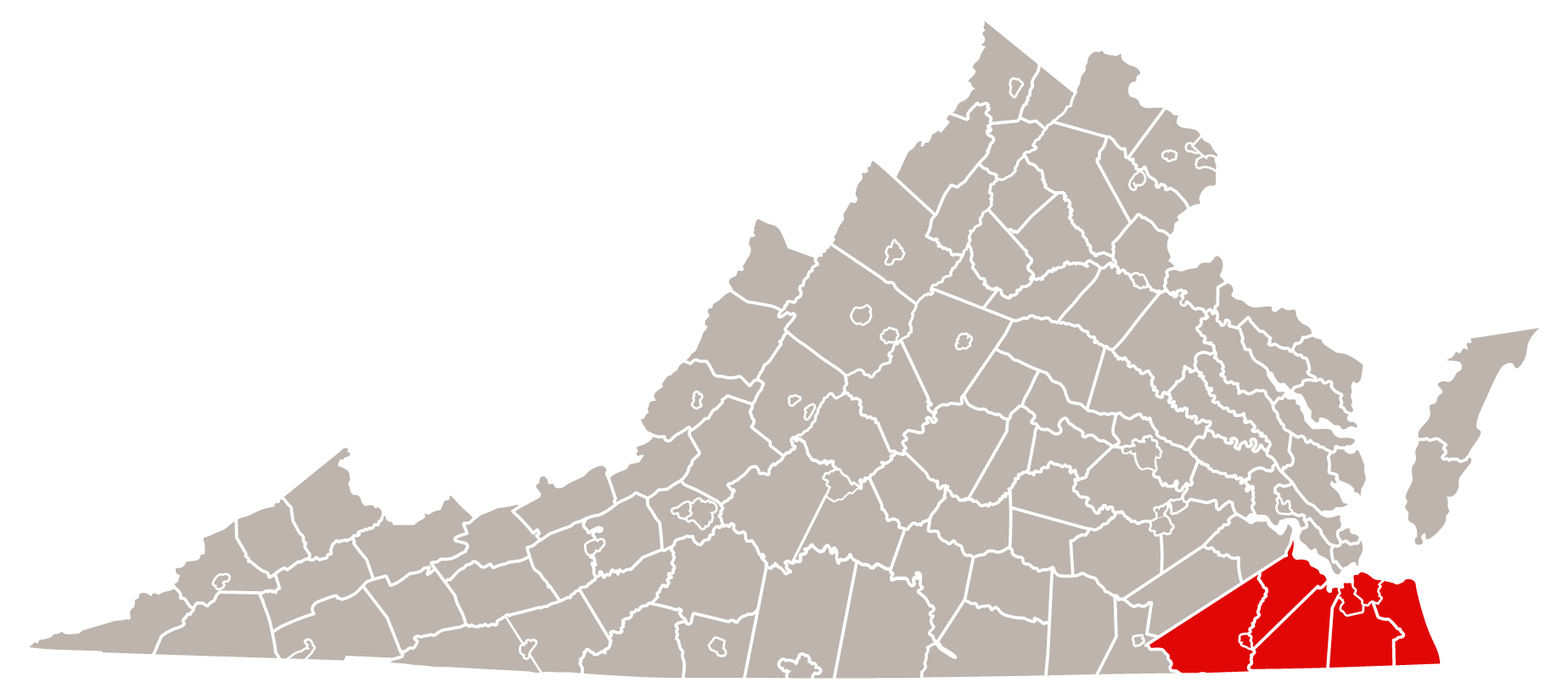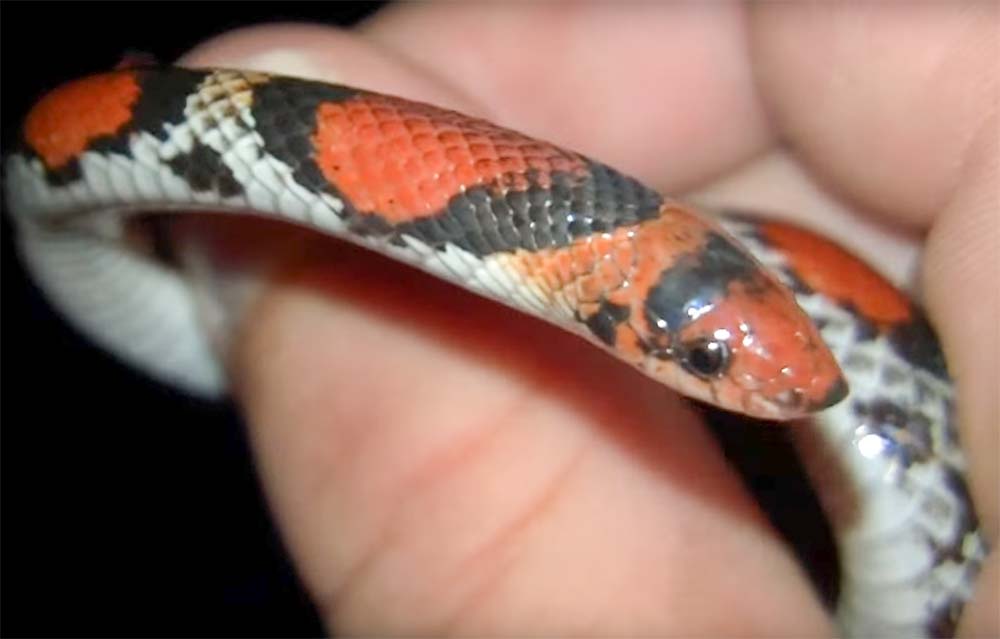
- Scientific Name
- Cemophora coccinea copei
- Range
- Southeast Virginia
- Also Known As
- False Coral Snake
- Venomous
- No
- Features
- Black, Orange or Red, and Yellow stripes
- Prey
- Turtle, Lizard, and Snake Eggs
- Litter Size
- 3 to 8 Eggs per Birth
- Life Span
- 4 Years
- Length
- 14 - 20 Inches
Quick Links for Northern Scarlet Snake
Northern Scarlet Snake Description
Northern Scarlet Snake Appearance
These here in Virginia have a white base with reddish orange blotches. These blotches will have a black border around them.
This snake tends to get confused with other snakes frequently such as the Milk Snake or it’s cousin, the Scarlet Kingsnake.
It is important to note that the blotches do not go around the body like the Scarlet King Snake. And that the blotches continue down the head, and the blotches on it are solid unlike the Eastern Milk Snake.
Size
This snake is usually between one and two feet long. With babies being around 5 – 6 inches from hatching.
Northern Scarlet Snake Behavior
These snakes spend most of their time underground, or in hiding. You can find them under logs, brush, leaves, and yard debris. They only leave during the evening to hunt.
These snakes rarely bite when picked up. If they do, there shouldn’t be much damage as their teeth is used to crack eggshells and not skin.
It is against the law in Virginia to keep any wild snake as a pet.
Range and Habitat
Range
These snakes are normally found in Southeastern Virginia. Mostly near the Suffolk and Norfolk areas. However, they sometimes can be spotted as far west as Farmville or Hampden Sydney and as far north as Ashland or Richmond.
Habitat
These snakes can be found in forested areas with a lot of dry sandy soils. Such areas such as pine forests or areas near shorelines of lakes and beaches. This is due to the fact that the Northern Scarlet Snake are burrowers, and sand is best for them to burrow.
Diet
These snakes love to eat eggs. Especially turtle and lizard eggs. They use their teeth to puncture the eggs to consume the contents and even sometimes swallow them whole. These snakes can sometimes eat smaller animals using constriction to kill and then eat their prey.
Reproduction and Young
Reproduction
Mating season for these snakes occurs in March through June
Eggs and Young
Eggs are laid in the mid-summer with 3 to 8 eggs per laying. The eggs will then hatch in the early fall. The hatch-lings will be a lighter color almost pink, and will get darker as they grow up in age. These hatchlings tend to be 5-6 inches long when born.



